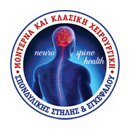Definitions
Lower back pain is a symptom and not a disease, which means that it is caused by different reasons. Lower back pain is usually a symptom of a spinal disease.
Sometimes, the back pain is accompanied by a pain along the back of the thigh that may even affect the toes or the foot. This root nerve pain, the pain that is caused by the pressure of a lumbar nerve root, for example, is called sciatica. When both lower back pain and sciatica appear, odds are increased that this is related to the spine and not any other part of the body, such as the hip joint.
How long does lower back pain last?
Lower back pain is classified by duration as acute (6–8 weeks), subchronic (2–3 months), and chronic (more than 3 months).
How common is lower back pain?
Lower back pain is very common and is the fifth most common reason for a visit to the doctor in the USA. It accounts for about 15% of sick leave and is the leading cause of disability in people younger than 45. The estimated impact on people’s lifespan fluctuates between 60% and 90%, while the yearly impact is 5%. Furthermore, lower back pain prevalence in adults, that is the percentage of adults suffering from lower back pain at any given time, fluctuates from 20% to 30%, depending on their gender with women suffering the most.
Lower back pain gets more common as years go by because its most common cause, spinal degenerative disease, exacerbates as people grow older. Modern lifestyle has also been associated with the increased frequency of lower back pain since a desk job, lack of exercise, and driving are all causes of it.
Which groups of people does it mainly affect?
Lower back pain mainly affects:
a. people between 30 and 60 years old,
b. overweight people,
c. people working in manual labor,
d. people working as drivers and pilots, and
e. machine operators who are exposed to frequent whole-body vibrations.
Acute lower back pain can be a symptom of which disease?
a. Intraventricular diseases: dissecting abdominal aortic aneurysm
b. Spinal cord tumors (lower back pain not subsiding with rest)
c. Osteomyelitis (lower back pain not subsiding with rest)
d. Discitis (lower back pain not subsiding with rest)
e. Sacroiliitis (spondylitis deformans, Reiter syndrome, Crohn’s disease, psoriatic arthritis, rheumatoid arthritis, osteoarthritis, gouty arthritis)
f. Cauda equina syndrome (caused by abscess, hematoma, tumor, or massive central disc herniation)
g. Pathologic fractures (osteoporosis or tumor)
h. Coccydynia
i. Ιntervertebral disc degeneration
j. Post-subarachnoid hemorrhage
k. Muscle pains caused by drugs for cholesterol (statins)
Subchronic lower back pain can be a symptom of which disease?
All of the above as well as:
a. Spondylolisthesis (vertebrae displacement)
b. Lumbar stenosis
c. Schmorl’s nodes
Chronic lower back pain can be a symptom of which disease?
All of the above caused by acute and subchronic lower back pain as well as:
a. Degenerative spondylolisthesis
b. Lateral foramen syndrome
c. Paget’s disease
d. Modic changes
e. Psychological reasons, including secondary gain (financial, emotional, etc.)
g. Failed back surgery syndrome (FBSS)
How does chronic lower back pain affect patients’ quality of life?
Chronic lower back pain lasts over 3 months and patients suffering from it are affected emotionally just like everyone suffering from chronic painful syndromes.
Patients are forced to refrain from several activities and are off work. It has further been observed that the more time they are off work, the less likely they are to return to work. Specifically, for those who are off work for less than 6 months, their odds of returning to work are about 50%, while for those who are off work for more than 2 years, only 5% of them return to work.
Lower back pain is the second leading reason for missed workdays among employees while the first leading reason is upper respiratory tract infections. The total cost of blue-collar workers’ treatment and compensation for lower back pain is larger than the total cost for all of the other work injuries together.
When are we dealing with a simple episode and when does our problem need a radical solution?
When a lower back pain episode lasts between 4 and 8 weeks, then we deal with an acute lower back pain episode and we treat it conservatively as the body self-heals in most cases.
Frequently, such a lower back pain episode is accompanied by pain in one or both legs (sciatica). This is very painful and lasts for more than 8 weeks. In this case, special treatment is required by a neurosurgeon. The doctor requests a lumbar spine imaging scan to reveal the cause of pain in order to proceed with the correct treatment. However, the patient’s neurological condition is sometimes deemed critical and an imaging scan as well as possible surgical treatment are done immediately regardless of the conservative treatment duration.
These critical cases are:
a) progressive neurological loss, such as progressive muscle weakness in the suffering leg and
b) cauda equina syndrome. The latter case is caused by massive cauda equina nerve compression in the spinal canal and is manifested with paraparesis and incontinence. On this rare occasion, urgent surgical treatment is required within 6 hours in order to prevent a permanent problem.
When is surgical treatment required?
Signs of surgical treatment are:
a. Urgent cases that may accompany lower back pain caused by a disc herniation (cauda equina syndrome, progressive neurological loss)
b.Lower back pain not subsiding with strong painkillers and causing absence from work for more than 15 days per month
c. The combination of lower back pain and sciatica that lasts for more than 2 months
d.Spinal instability (spondylolisthesis or commonly referred as vertebrae displacement)
e.Osteoporosis fractures causing constant lower back pain along with progressive height decrease of the vertebral body
f. Lower back pain along with facet joint syndrome. In this case, lower back pain is experienced worse during lower back stretching and it’s not accompanied by sciatica.







